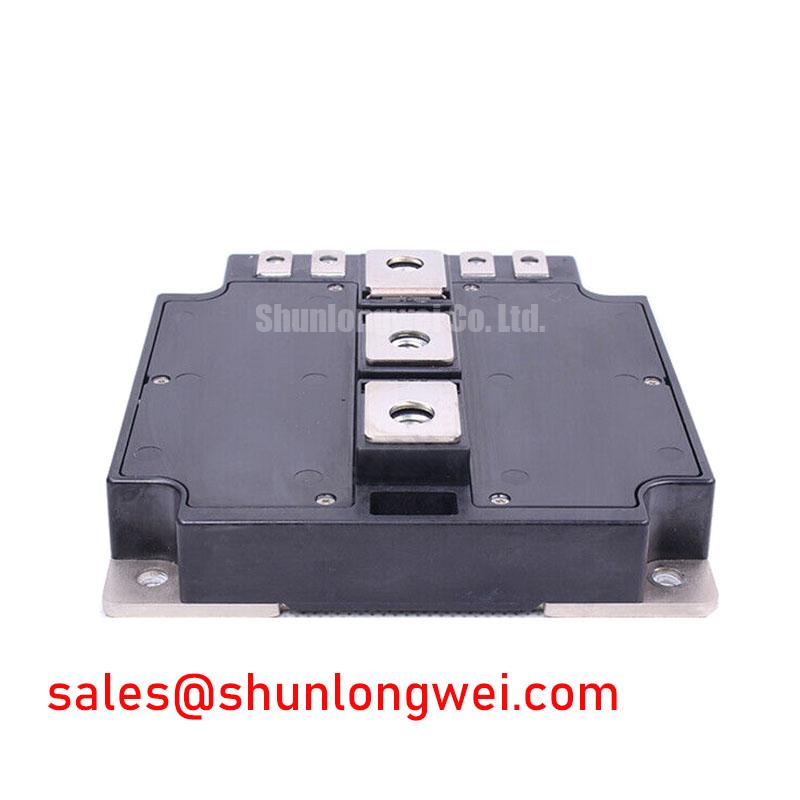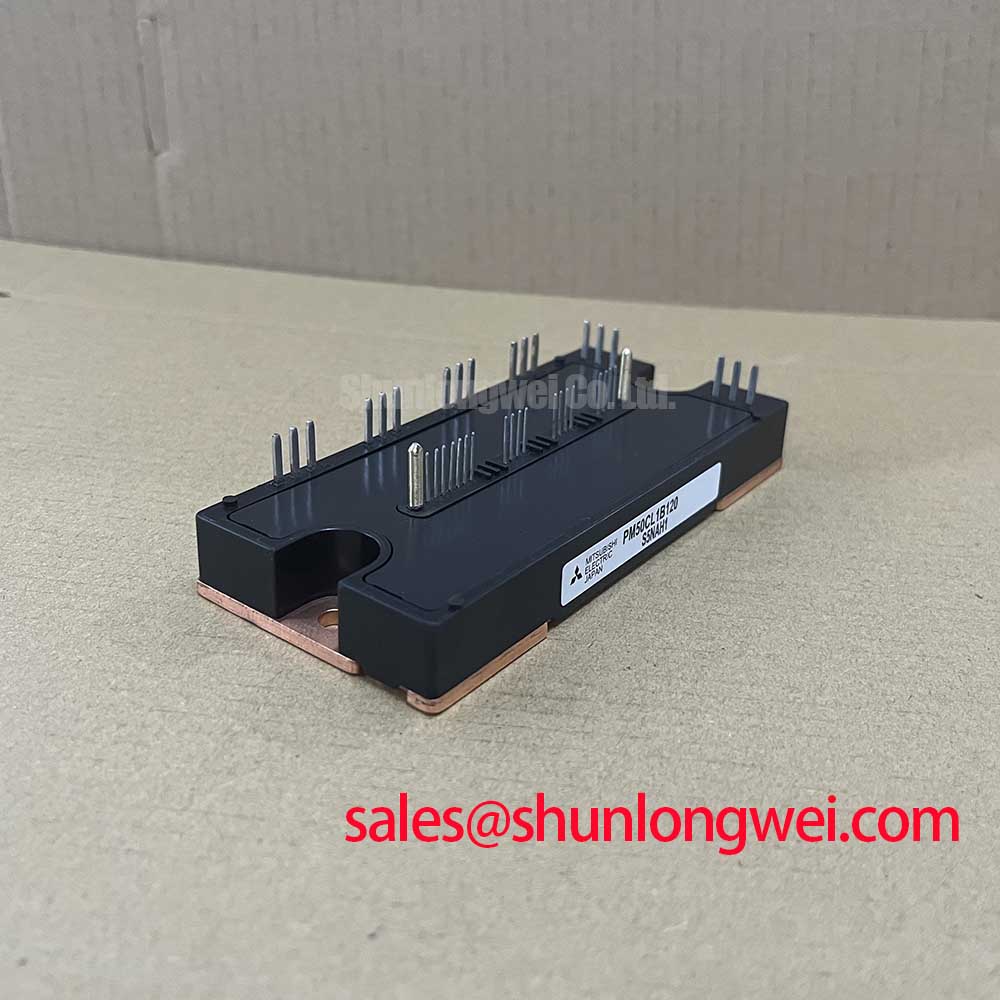Content last revised on October 25, 2025.
CM600DU-24FA | 1200V 600A Dual IGBT Module: An Engineering Analysis of Low-Loss Performance
Engineered to minimize total power losses in high-frequency power conversion systems, the Mitsubishi CM600DU-24FA is a high-current, dual IGBT module. It integrates two 1200V | 600A IGBTs into a single, robust package, featuring a typical VCE(sat) of 2.7V. This design directly translates to reduced thermal load and enables higher power density in demanding applications. For high-power motor drives and UPS systems where switching efficiency is paramount, this dual IGBT module offers a distinct performance advantage. The module's architecture simplifies the construction of inverter legs and enhances thermal management through its isolated baseplate.
Application Scenarios & Value
System-Level Gains from Optimized Low-Loss Switching
The CM600DU-24FA is engineered for high-power applications where efficiency and thermal performance are critical design constraints. Its primary value is demonstrated in systems like industrial Variable Frequency Drives (VFDs), large-scale Uninterruptible Power Supplies (UPS), and renewable energy inverters. In a VFD, for example, the engineering challenge is to precisely control a high-horsepower motor without generating excessive heat within a confined cabinet. The CM600DU-24FA's low collector-emitter saturation voltage (VCE(sat)) directly reduces conduction losses—the heat generated while the switch is on. This reduction in waste heat allows designers to either specify a smaller, more cost-effective heatsink or operate the system at a higher power output without risking thermal overload. This capability is a cornerstone of creating more compact and reliable power electronics. While the CM600DU-24FA is ideal for applications requiring up to 600A, for systems with lower current demands, the related CM400DU-24NFH provides a 400A alternative in a similar voltage class.
Key Parameter Overview
Translating Specifications into Performance Advantages
The performance of the CM600DU-24FA is defined by a set of key electrical and thermal characteristics. These parameters are not just numbers; they directly inform the reliability, efficiency, and power density of the end application. The table below highlights the critical specifications drawn from the official datasheet.
| Parameter | Symbol | Conditions | Value |
|---|---|---|---|
| Collector-Emitter Voltage | VCES | Gate-Emitter Short | 1200V |
| Collector Current (DC) | IC | TC = 25°C | 600A |
| Collector Current (Pulse) | ICRM | Pulse | 1200A |
| Collector-Emitter Saturation Voltage | VCE(sat) | IC = 600A, Tj = 25°C | 2.7V (typ.) |
| Maximum Power Dissipation | Ptot | TC = 25°C | 1540W |
| Operating Junction Temperature | Tj | -40 to +150°C |
Download the CM600DU-24FA datasheet for detailed specifications and performance curves.
Technical Deep Dive
Dissecting the Low VCE(sat) and Switching Characteristics
What is the key benefit of this module's design? Minimized total power losses for enhanced efficiency. Two fundamental parameters govern this: VCE(sat) and switching energy. The VCE(sat) can be thought of as the 'voltage toll' the module charges for being in the 'on' state. A lower value, like the 2.7V typical for the CM600DU-24FA, is analogous to a wider highway lane; it allows the 600A of current to flow with less resistance, directly reducing the energy wasted as heat during conduction. This is a critical factor for achieving higher efficiency ratings. For engineers, Mastering 1200V IGBTs in Industrial Inverters involves a careful balance of these static and dynamic losses to optimize system performance.
Furthermore, the module integrates a super-fast recovery free-wheel diode. This component is essential for handling the reactive currents in motor drive and inverter circuits. Its fast reverse recovery characteristic minimizes losses during the commutation phase, contributing to the overall low-loss performance of the module, especially at higher switching frequencies.
Frequently Asked Questions (FAQ)
Engineering Insights into the CM600DU-24FA
What is the primary benefit of the dual-switch '2-in-1' configuration in the CM600DU-24FA?
The dual, or half-bridge, configuration significantly simplifies the design of a three-phase inverter. Instead of mounting and connecting two separate 600A IGBT modules to create one inverter leg, a single CM600DU-24FA provides the complete circuit. This reduces component count, minimizes stray inductance from busbar connections, and simplifies the assembly process, leading to a more compact and potentially more reliable system.
How does the typical VCE(sat) of 2.7V directly impact the thermal design of a power converter?
A lower VCE(sat) directly reduces conduction power loss (P_cond = VCE(sat) * IC). With a VCE(sat) of 2.7V at its nominal 600A current, the module generates less heat compared to devices with higher saturation voltages. This gives engineers two choices: either use a smaller, lighter heatsink to achieve the same operating temperature, thereby increasing power density and lowering system cost, or maintain the same heatsink design to run the device at a lower junction temperature, which is key to unlocking IGBT thermal performance and improving long-term reliability.
What is the purpose of the integrated NTC thermistor and how should it be used?
The module includes an on-chip Negative Temperature Coefficient (NTC) thermistor. Its purpose is to provide an accurate, real-time temperature reading of the module's baseplate. This feedback is critical for a robust control system. It allows the system controller to monitor for over-temperature conditions and trigger protective measures, such as reducing the output current or shutting down the system, to prevent catastrophic failure from thermal runaway. This is a vital feature for ensuring the module operates within its Safe Operating Area (SOA).
Strategically, the CM600DU-24FA represents more than just a set of ratings; it embodies a design philosophy focused on reducing power losses at the component level to unlock system-wide benefits. By leveraging the low VCE(sat) and integrated half-bridge topology, engineering teams can meet stringent efficiency targets and develop more compact, reliable, and cost-effective high-power converters for the next generation of industrial and renewable energy systems. The careful implementation of a robust IGBT gate drive design is essential to fully exploit the performance potential of this module, particularly its fast-switching capabilities.















